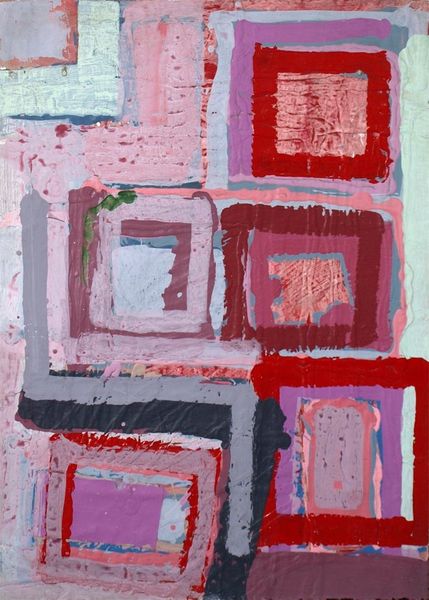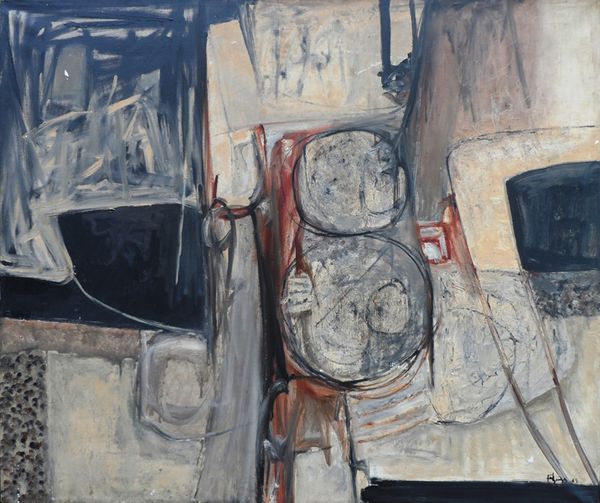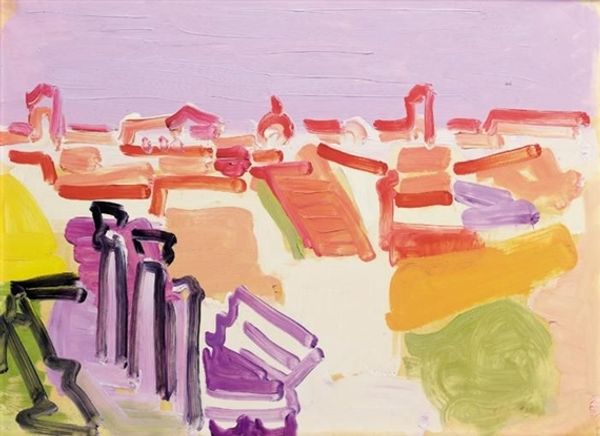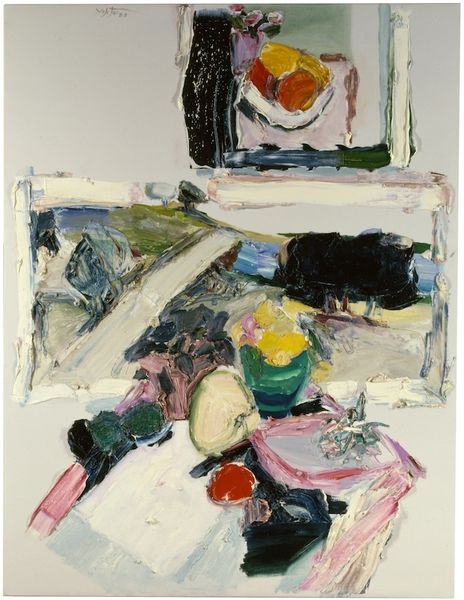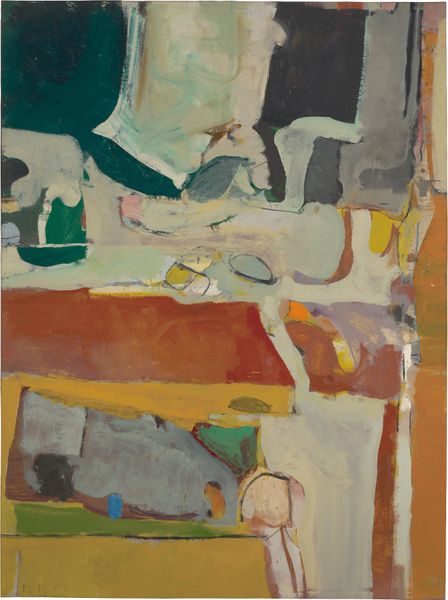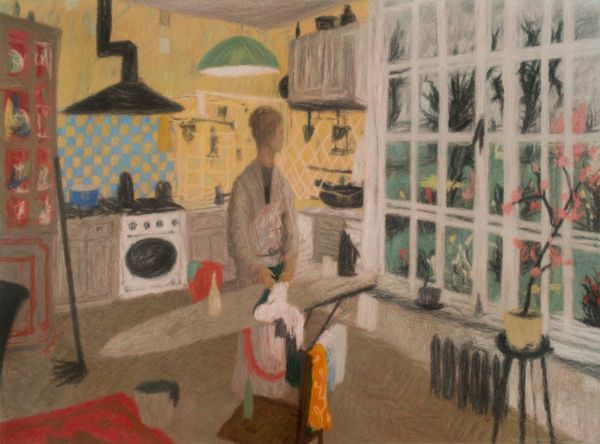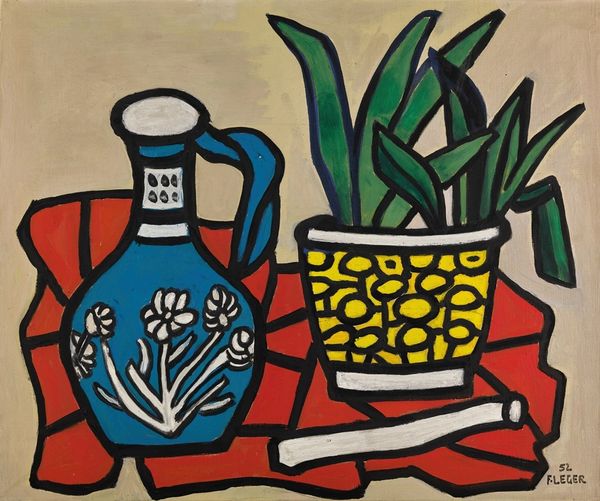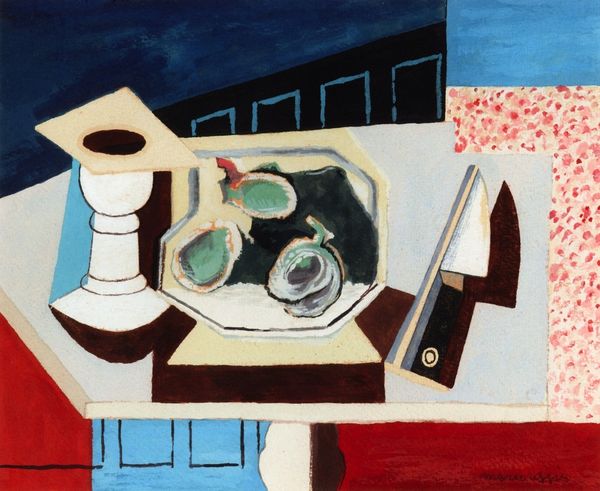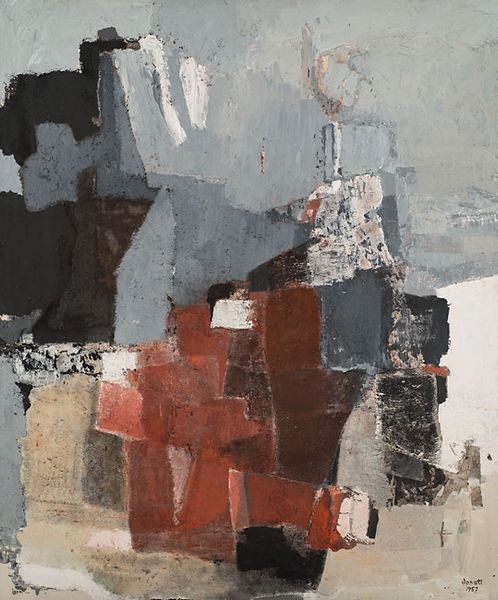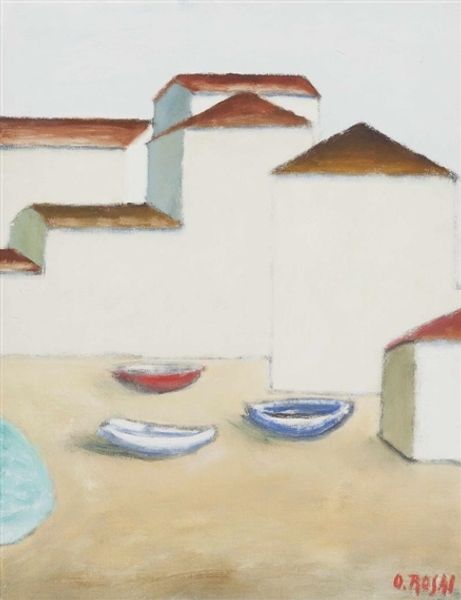
Dimensions: overall: 196.2 x 228.6 cm (77 1/4 x 90 in.) framed: 197.8 x 231.2 x 5 cm (77 7/8 x 91 x 1 15/16 in.)
Copyright: National Gallery of Art: CC0 1.0
Editor: We're looking at Philip Guston's "Painter's Table," painted in 1973 using acrylic on canvas. It's an intriguing composition – a collection of somewhat banal objects, all rendered in this fleshy, almost unsettling pink. What formal qualities stand out to you in this piece? Curator: The composition itself presents an array of geometric forms, though softened with rounded edges. Note the juxtaposition of linear objects—books, painter's tools, cigarette—with the more curvilinear elements: the lightbulb, the ashtray, the slipper fragments. How does this interplay between hard and soft impact the viewer? Editor: It does create a kind of visual tension. Everything seems weighted, dense. Is the overarching color palette influencing that perception? Curator: Precisely. The almost monochromatic application of pink flattens the picture plane, emphasizing shape over depth. Notice the absence of traditional perspective. This deliberate flatness challenges our assumptions about pictorial space. It's as though the objects are pressing against the surface, demanding attention through their sheer two-dimensionality. What effect does this flattening have on the narrative, do you think? Editor: I suppose it abstracts the items and prevents the viewer from creating a scene in their minds, to make them representative or symbols. Now I can see that this emphasis on the inherent form of these objects draws attention away from, say, what the book represents, and invites me to focus on the squareness of its edges and the darkness between the pages instead. Curator: Indeed. The success of the painting hinges not on what is represented, but on *how* it is represented. Guston’s strategic organization of these forms is what endows the painting with its peculiar visual and philosophical power. Editor: This close reading has changed my view of the painting; what seemed arbitrary at first now seems so thoughtfully considered. Thank you. Curator: And thank you; articulating these formal qualities highlights the underlying genius in Guston's seemingly simple work.
Comments
No comments
Be the first to comment and join the conversation on the ultimate creative platform.


